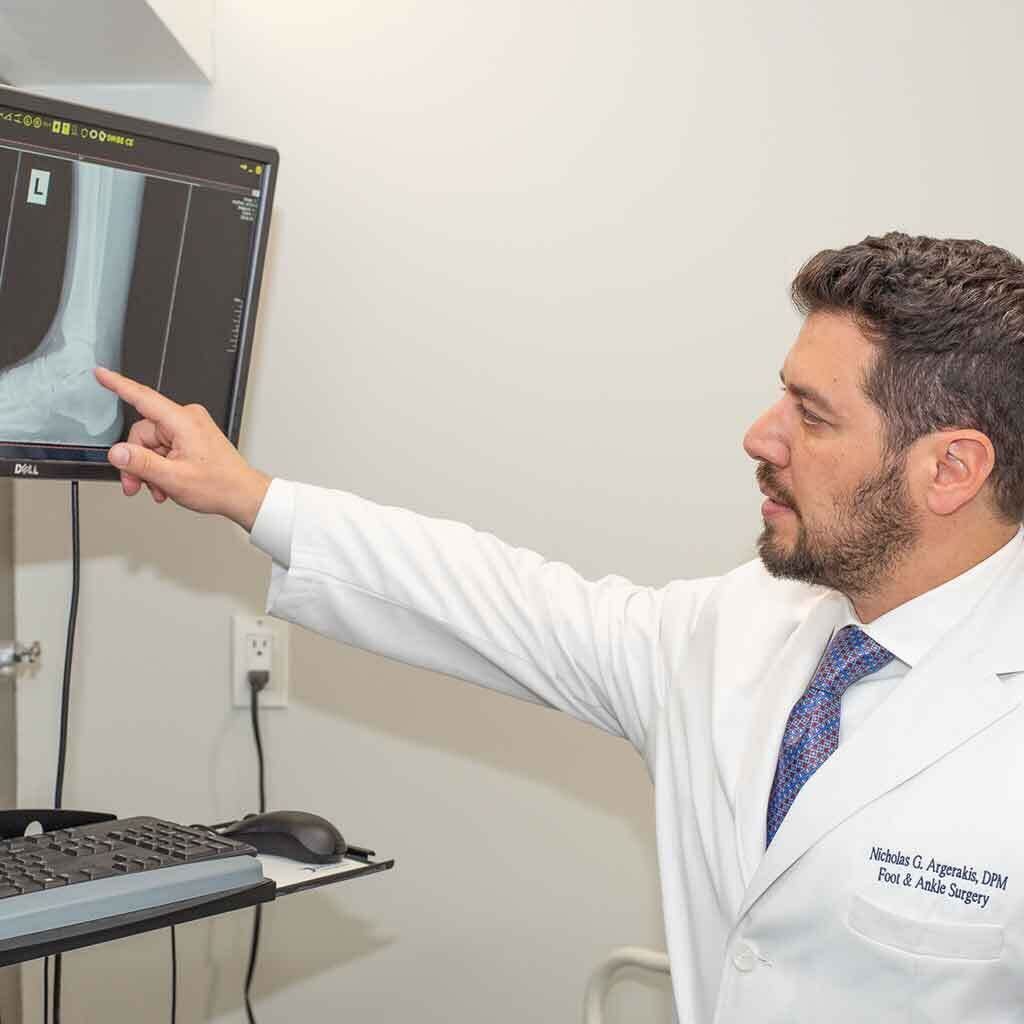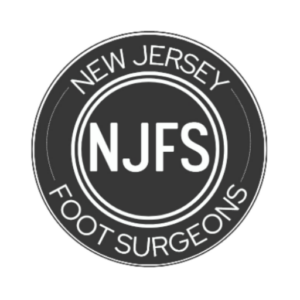Hammer toe often leads to serious complications that reduce movements and thus Frustration. But it doesn’t have to be a rule that governs the entirety of your existence. Try to picture yourself after you resolve all your hammer toe problems and have full freedom to do your favorite things. The medical doctors at our practice undertake a thorough analysis of your needs and timelessly apply expert surgical procedures to create a perfect plan for your feet.
Contact us for an appointment, call our customer service number today at (732)-320-9173. Hammer toes should not be left to worsen, and at our clinic, our specialists will assist you by regaining the strength of your toes.
Key Takeaways
- A deformity where the middle joint of the toe bends unnaturally, leading to pain, restricted movement, and discomfort.
- Flexible hammer toe occurs in the early stage with some mobility, while rigid hammer toe involves severe stiffness and limited joint movement.
- Contributing factors include wearing tight or high-heeled shoes, trauma, genetic predisposition, arthritis, and muscle imbalances.
- Visible deformity, pain, corns, calluses, swelling, redness, and restricted movement are common signs.
- Options like arthroplasty, arthrodesis, tendon transfer, joint resection, and digital splinting provide effective solutions for severe cases.
- Skilled surgeons, personalized treatment plans, advanced techniques, and comprehensive post-surgical support ensure the best outcomes.
For expert hammer toe treatment, call New Jersey Foot Surgeons at (732)-320-9173 today.
What is Hammer Toe?
A hammer toe is a deformity that typically affects the second, third, or fourth toes. It occurs when the toe’s middle joint is bent upward, giving the toe a “hammer-like” appearance. This unnatural bend can lead to significant pain and discomfort as the toe remains curled and unable to flex. Over time, the toe can rub against the inside of shoes, causing irritation, redness, swelling, and the development of corns, calluses, or sores. The condition may vary in severity, from flexible to rigid, and may lead to difficulty walking or wearing certain shoes.
Types of Hammer Toe
Flexible Hammer Toe
In the early stages of the condition, the toe still retains some mobility, which is why it is often referred to as a “flexible” hammer toe. At this stage, conservative treatments such as better footwear, orthotics, and exercises can help prevent progression. Early intervention is key to avoiding more severe complications.
Rigid Hammer Toe
When the condition progresses and the tendons and ligaments in the toe stiffen, the toe becomes less flexible, leading to a “rigid” hammer toe. At this stage, surgical correction is usually necessary to relieve pain, correct the deformity, and restore function. Surgery may involve tendon transfers, joint resection, or joint fusion.
Causes of Hammer Toe
Several factors contribute to the development of hammer toe, including:
- Footwear Choices: Wearing tight, narrow, or high-heeled shoes can exert excessive pressure on the toes, leading to muscle and tendon contraction, which causes the toe to bend unnaturally.
- Trauma or Injury: Injuries such as sprains, fractures, or misalignments can contribute to the development of hammer toe by altering the natural structure of the foot.
- Genetics: A family history of foot deformities can increase the risk of developing hammer toe, making genetics a significant factor in its occurrence.
- Arthritis: Conditions such as rheumatoid arthritis or osteoarthritis can lead to joint inflammation and deformity, contributing to the development of hammer toe.
- Muscle Imbalances: Conditions such as flat feet or high arches can lead to abnormal pressure distribution, which can result in abnormal toe positioning and bending. Muscle imbalances in the feet can also contribute to this condition.
- Neuromuscular Conditions: Certain neuromuscular conditions can weaken the muscles in the toes and lead to deformities like hammer toe.
Symptoms of Hammer Toe
The symptoms of hammer toe can vary in severity, but typically include:
- Visible Deformity: The affected toe(s) will exhibit a bent, hammer-like appearance at the middle joint. In more severe cases, the toe may even cross over an adjacent toe, resulting in a condition called “crossed-over toe.”
- Pain and Discomfort: Pain is common, particularly when walking or wearing shoes. The toe may feel sore at the top, tip, or ball of the foot, where pressure from footwear is most significant.
- Corns and Calluses: Due to constant friction and pressure from shoes, thickened skin may develop on the knuckle or ball of the foot. This skin may harden into corns or calluses, which can be painful.
- Swelling and Redness: The affected toe may become irritated, red, warm, and swollen, especially after prolonged walking or wearing restrictive shoes.
- Restricted Movement: Over time, the toe may become stiff and unable to move properly, leading to difficulty walking and potentially affecting balance.
Risk Factors for Hammer Toe
Several factors increase the likelihood of developing hammer toe:
- Age: As people age, the muscles and tendons in the feet can weaken, increasing the risk of deformities like hammer toe.
- Gender: Women are more likely to develop hammer toe, primarily due to the wearing of high-heeled or tight shoes.
- Foot Structure: People with abnormal foot structures, such as flat feet or high arches, are more prone to developing hammer toe, as these conditions can lead to abnormal pressure distribution across the toes.
- Chronic Conditions: Conditions like diabetes, obesity, and arthritis can affect circulation and nerve function, increasing the risk of developing hammer toe. Poor circulation may reduce the ability to heal or prevent further damage to the toes.
- Footwear Choices: Consistently wearing shoes that crowd the toes or place undue pressure on them significantly raises the likelihood of developing hammer toe.

Preparing for Surgery
Before undergoing hammer toe surgery, our team will conduct a thorough evaluation, including the following:
- Medical History Review: About any chronic conditions that have to do with surgery or postoperative care because they impact the general well-being of patients. This implies the use of any medications and possible allergies before making any decisions regarding the matter.
- Physical Examination: It involves observation of the affected toe, x-rays, or any other structure of the foot. This event assists in evaluating the kind of surgery the patient should undergo and whether they have other complications that should be intervened as well.
- Imaging Tests: Consultative tests such as X-rays or CT scans to ascertain the degree of deformity and how to treat it. These images offer significant vision of the bone and joint graphics which can assist with surgical planning.
Treatment Options for Hammer Toe
Early-stage hammer toe may be treated with non-surgical methods, including:
- Proper Footwear: Wearing shoes with a wider toe box that do not crowd the toes can reduce pressure on the affected area.
- Orthotics and Padding: Using shoe inserts or padding can help alleviate discomfort by redistributing pressure away from the affected toe.
- Exercises: Specific toe exercises and stretches may help prevent further deformity and maintain flexibility.
If the condition progresses and becomes rigid, more invasive treatments may be necessary:
- Surgical Correction: For rigid hammer toe, surgery may be required to correct the deformity. This may include tendon transfer (rearranging a tendon to straighten the toe), joint resection (removal of part of the joint), or joint fusion (permanent straightening of the toe by cutting tendons and ligaments and removing part of the bone).
- Post-Surgical Care: After surgery, the toe is often held in place with pins for 3-4 weeks. There may be some swelling, redness, and stiffness during recovery, and a special shoe may be prescribed to assist with walking.
Risks and Complications of Hammer Toe Surgery
Like any surgical procedure, there are risks associated with hammer toe surgery, including:
- Infection or Bleeding: As with any surgery, there is a risk of infection or bleeding at the surgical site.
- Nerve Injury: There may be a risk of nerve damage during the procedure, potentially leading to numbness or pain.
- Poor Alignment: In some cases, the toe may not align properly after surgery, requiring additional treatment.
Conclusion
Hammer toes can significantly impact your quality of life, but effective surgical treatment is available. Our skilled team is committed to providing the highest standard of care to help you achieve relief from pain and restore the function of your toes. For more information or to schedule an appointment, visit our website or call our office at (732)-320-9173. Your journey to pain-free walking starts here at New Jersey Foot Surgeons.


